Industrial harmony – the state of peaceful coexistence and cooperation between employees and employers – is a critical factor in fostering a positive work environment for everyone. While some organisations view industrial harmony as a goal, however, it needs to be considered a necessity, one embedded into the culture of a business and maintained by human resources (HR) teams.
What is industrial harmony?
Industrial harmony refers to the state of balance, cooperation, and mutual understanding between employees, employers, and other stakeholders in the workplace. It is a condition where all parties involved in the organisation’s operations work together in a collaborative and conflict-free manner. In essence, it is the absence of industrial disputes, conflicts, or discord within the workplace.
This harmonious state is not limited to relationships between employees but extends to encompass the broader industrial relations framework, including relationships between employers and trade unions.
Why is industrial harmony in the workplace important?
Achieving industrial harmony in the workplace brings a number of benefits, including:
- Employee satisfaction. A harmonious work environment is closely linked to employee satisfaction. And when employees feel valued and content, they are more likely to remain committed to the organisation.
- Retention. Reducing employee turnover is another advantage of industrial harmony. Companies with a harmonious atmosphere tend to retain their talent, which saves on recruitment and training costs.
- Reputation. A positive work environment can enhance a company’s reputation in spaces from traditional media through to social media, making it an attractive place for prospective employees and customers alike.
- Legal compliance. Building industrial harmony can support organisations in remaining compliant with labour laws and regulations, which in turn can reduce the risk of legal disputes or other penalties.
- Well-being. A harmonious work environment contributes to the well-being of employees, reducing stress and promoting a healthy work-life balance.
What is the relationship between industrial harmony and productivity?
One of the most significant benefits of industrial harmony is its link to higher productivity: when employees are satisfied, engaged, and working in a peaceful environment – with one another as well as with their employers – their productivity increases. And this has knock-on benefits, too, including:
- Improved performance. When employees are content and motivated, they are more likely to perform at their best – and organisational performance improves, too.
- Better decision-making. In a harmonious work environment, decision-making processes tend to be smoother and more effective. Employees are more likely to collaborate and contribute their ideas, and feel more control over their work as a result of their involvement in the process.
- More effective communication. Industrial harmony fosters open and effective communication between employees and management, rather than keeping the two separated at arm’s length. This results in clearer instructions, better feedback, and more efficient problem-solving.
- Increased employee empowerment. A harmonious workplace encourages employee empowerment. When employees are given more responsibility and autonomy, they often respond with increased dedication and creativity, which boosts productivity.
- Enhanced working conditions. A peaceful work environment often goes hand-in-hand with better working conditions. This can reduce downtime due to accidents or injuries, contributing to overall productivity.
- Successful employee relations. Maintaining good employee relations through successful collective bargaining and effective company policies can prevent disputes and strikes that disrupt productivity.
How to create industrial harmony through HR
A human resources function has a powerful role to play in creating industrial harmony, and has a number of ways to promote it. These include areas such as:
- Recruitment and onboarding. An HR department should be recruiting new employees who align with their company’s culture and values, and who can seamlessly integrate into the organisation. By ensuring a good fit from the start, HR can build team stability and reduce the likelihood of conflicts arising later.
- Communication. HR management and teams should create open and constructive communication channels between employees and management. For example, this might include regular feedback sessions or forums where employees can ask questions or voice any concerns
- Training and development. Providing opportunities for continuous learning and skills development can improve employee performance and demonstrate an organisation’s commitment to its employees’ growth. More importantly, training around new systems or technologies – such as automation – can help employees adapt to new situations or challenges, and alleviate any stress around change.
- Incentives and rewards. HR can design incentives and rewards systems to recognise their employee contributions, ensuring they feel appreciated and valued.
- Well-being programmes. Promoting employee well-being through stress management practices, work-life balance initiatives, and mental health support can reduce stress and improve overall morale.
- Collective bargaining support. HR can support work with trade unions or other representative bodies to negotiate fair terms and conditions of employment. This can include agreements on wages, working hours, and benefits.
- Company culture. HR actively shapes and promotes an organisation’s culture, which should be built on trust, transparency, and inclusivity – and a positive company culture encourages cooperation and harmony among employees.
- Stakeholder engagement. HR can also engage external stakeholders – such as customers, suppliers, relevant subject matter experts, and the local community – and build positive relationships that can indirectly influence the internal work environment.
Measuring industrial harmony
To assess the effectiveness of HR practices in promoting industrial harmony, it is the role of human resource management to use questionnaires, employee feedback surveys, and other performance metrics as part of their methodology. And by collecting data and feedback from respondents, HR teams can build up a case study of their success and continuously refine their strategies to maintain a harmonious work environment.
Promote industrial harmony in businesses
Develop the leadership skills to create industrial harmony in work environments with the 100% online Master of Business Administration (MBA) at North Wales Management School, part of Wrexham Glyndwr University. This flexible MBA degree has been designed for ambitious, self-starting professionals who are looking to fast-track their careers with a deeper understanding of business and leadership skills.
The comprehensive curriculum of this MBA programme covers key business disciplines including marketing, finance, strategic management, and human resource management, and will develop your skills and knowledge in:
- Finding solutions to complex business challenges.
- Creativity and idea generation.
- Communication and stakeholder management skills.
- Analytical techniques – turning data into actionable insights.
- Understanding and leveraging macro trends.




